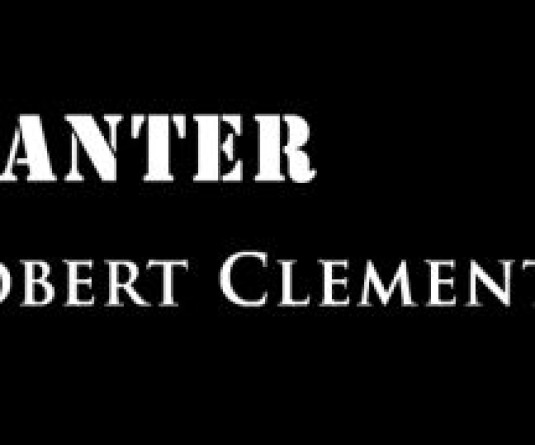Photo Courtesy: Kelly via Pexels

Aadi Arora, Sadhika Anand, Rithwik Agarwal
In a world full of environmental hazards, where global warming and climate change is on the rise, sustainability is a key agenda. Through the years, sustainability has become an important requirement and with the United Nations creating the Sustainable Development Goals (SDGs), it has become imperative to develop cities for the future, as the SDG 11 suggests.
Smart cities are often associated with efficient waste management systems, clean air and adequate supply of freshwater. Currently, cities generate 70% of the world’s waste and with the rapid onset of urbanization, waste management has become one of the most crucial areas to work on. Conceptually, waste management includes both the segregation of waste as well as its proper disposal and both of these remain a significant challenge in India.
Delhi houses the infamous Ghazipur landfill which has been prey to fires and has been the source of 37 major methane leaks since 2020. The landfill was originally designated to contain 20 meters high of waste but with the lack of proper waste disposal, it is now more than 65 meters high. This issue of overcrowded landfills has risen due to improper planning. If we can understand how waste can be allocated to different landfills instead of piling all of it onto one landfill, we would be one step closer to solving the issue at hand. We aim to highlight various models which can help with proper disposal of waste by underlining the different landfills that are present in the city and how waste should be divided to ensure that landfills do not get overcrowded.
Municipal Solid Waste Management (MSWM) is a process which involves waste generation, collection, transportation and disposal of municipal waste. Municipal waste is made up of a huge variety of sources. They can be durable goods, nondurable goods, containers, packaging, food wastes, yard wastes, miscellaneous inorganic wastes from residential, commercial, institutional, and industrial sources. This Municipal Solid Waste is further classified into dry waste and wet waste which is a useful distinction to make for recycling purposes. Wet waste refers to fruit and vegetable waste like peels and seeds. Dry waste, on the other hand, refers to containers and packaging. Common materials in dry waste include paper, plastic, cardboard, and metals.
Historically, by the 1700’s, waste disposal had become a huge problem, and burning waste on the street was common. A more modern form of MSWM emerged in America in the 1890’s and by the 1930’s almost every city had access to waste collection services. After collection, the waste was disposed of by landfill dumping, incineration or ocean disposal. Recycling only became mainstream in America during the 1960’s, and it was during this time that the curbside collection of metal and paper first began.
It is evident that waste management has been a prominent problem since the beginning of modern civilization. Over centuries, the human race has seen advancements in the development of materials and products and the challenges with waste disposal methods have also evolved. However, to achieve current human goals such as creating sustainable cities, current waste management methods are not sufficient. There are two promising methods being proposed in current discourse on waste management.
One method proposed for modern and effective waste management is the use of Route Optimisation of garbage trucks as it is estimated that nearly 60-80% of the cost of MSWM comes from transportation and collection. Route optimisation depends upon the concept of Internet of Things (IoT) and Machine Learning, where information on waste produced by communities would be gathered by “Smart” Bins. This data could then be fed into Machine Learning algorithms that could calculate an efficient route for trucks to collect waste.
This can serve as a great waste management solution as it can operate in real time, and can give optimised solutions for every situation. However, the complexity of the entire structure having various components such as sensors, batteries and an online cloud system makes it a very challenging venture to set-up and maintain.
The other proposed method of waste management is the use of Resource Allocation algorithms so that the waste can be efficiently distributed to their respective disposal and treatment sites. The common waste disposal methods are landfills, recycling, composting or incineration. Each of these processes have their own requirements and capacities of waste they can handle and as such, resource allocation will be required to ensure that the sites run as efficiently as possible. Resource allocation is classified into two steps. The first step includes the waste being segregated into groups to be sent to landfills, recycling plants, composting plants and incinerators. After that, waste is to be distributed in a way that the particular site’s maximum capacity for handling waste is not exceeded. This is a complex process that can be better solved with the use of Machine Learning.
It proves to be a good addition to the ultimate waste management solution as it can prevent the negative impacts associated with the inefficient use of waste disposal systems, an example being the overflow of landfills. It increases the efficiency of waste disposal as well, since plants are now being allocated trash at their optimal capacity. This, however, does not completely remove the environmental impact of the concentration of waste in a single spot. It instead only spreads it out geographically which slows down its growth , which means that the solution is not effective long-term.
We believe that focusing on Resource Allocation is more pertinent as a waste management solution than Route optimisation because, although route optimisation focuses on minimizing the collection costs, the technology and capability to integrate this does not currently exist in most places in the world. As such, resource allocation is a more viable solution at the moment. To implement resource allocation, two models come to mind:
A machine learning approach, although computationally possible, may not be very accurate due to the lack of a large amount of training data. The optimised bin-packing approach is much more computationally feasible and will give an accurate answer.
We aim to provide a proof-of-concept of our solution using this model: the model will have various simplifications of real world variables. It uses a sorting algorithm to segregate the waste into recyclable and non-recyclable groups, then distributes them according to the “optimal” capacity (daily maximum quota) of each landfill. We introduced this variable so that depending upon how full they are, the user can input a daily maximum quota so as to ensure the “equitable” distribution of trash.
We will only be considering dry waste in our model and assume that landfills are the main sites where waste disposal occurs. The model will be described in more detail below.
We first assume, as a base condition, that the trucks have already collected dry waste from the communities. This is a safe assumption as separation of waste into wet and dry is already being followed in most places around the world. Then, all these trucks would aggregate at a main recycling plant. At this location, the waste will be grouped into recyclable and non-recyclable waste using our sorting algorithm. Recyclable waste will be further grouped into various subcategories and taken care of at this plant. We will then begin to deal with the non-recyclable waste.
An important factor to note is that the number of trucks is an important constraint in our optimal solution. We give the constraint that trucks are only able to dump their waste at one landfill site and that trucks have a fixed capacity of waste they can transport.
Our optimisation algorithm will calculate the best way to distribute waste between landfills, such that maximum waste is disposed of, without causing an overflow in landfills. We believe our model can handle a scaled up version of this problem as long as the required data is provided. Furthermore, we believe that this model can slowly be built up to handle more real-world considerations, an example could be adding other types of waste disposal sites such as incinerators.
As cities expand, route optimisation combined with the resource allocation machine learning approach can become a remarkable development to increase the efficiency of waste collection. It has the potential to be a powerful model to achieve SDG 11.
To achieve sustainable cities, further innovation will be required in the collection and disposal methods of waste. We are confident that the technique we have devised will benefit our community. It is our sincere hope that this can help provide a model which aids in waste segregation and management.
Aadi Arora, Sadhika Anand, Rithwik Agarwal are first-year BTech students at Plaksha University, Mohali.





